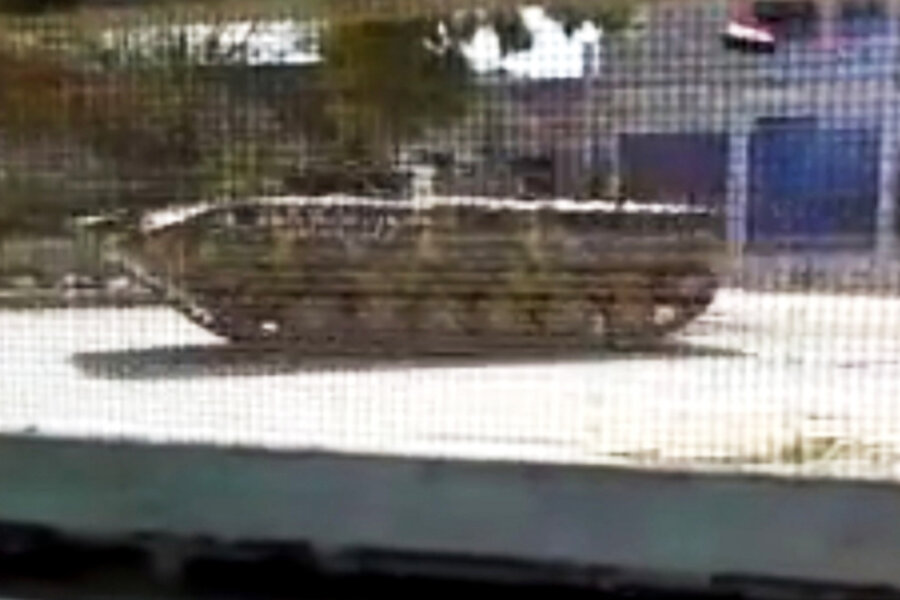Syria cease-fire takes hold, but could be tested by Friday protests
Loading...
• A daily summary of global reports on security issues.
Reports from Syria today indicate that both the regime and opposition are so far adhering to the cease-fire that went into effect at 6 a.m. today, with headlines describing Syria as "quiet" and "calm."
Government troops are still defying the demands by United Nations envoy Kofi Annan to pull out of towns and cities, but they have stopped attacking opposition strongholds across the country. The calm comes as some vindication for Mr. Annan, who insisted earlier this week that his peace plan for Syria was not dead even as a deadline for Syrian troops to pull out of towns and cities passed with no action.
The international community remains deeply doubtful that the Syrian regime's compliance will last, particularly if large-scale protests resume, and seems skeptical the regime will accede to other demands made in Annan's plan.
The Associated Press reports that the plan is "widely seen as the last chance for diplomacy to end the 13-month-old uprising," which is "veering toward an armed insurgency." Some say the credit for today's progress goes to Russia and China, which backed Annan's plan after months of opposing any international action against the Syrian regime.
Analyst Salman Shaikh, director of the Brookings Doha Center, said while the cease-fire is fragile, the apparent halt in government attacks suggests Assad's allies are pressuring him for the first time, after shielding him from international condemnation in the past. Annan has visited Russia, Iran and China in his attempt to get the broadest possible backing for the plan.
If the cease-fire holds long enough, it could encourage the opposition to resume protests in large numbers, "testing" the sincerity of the government's agreement to Annan's plan, Mr. Shaikh told AP. The regime responded brutally to previous protests and Assad has been unwilling to loosen his grip on opposition areas as that could lead to the reemergence of antigovernment demonstrations.
Fawaz Zakri, a spokesman for the opposition Syrian National Council, said the government has so far abided by the cease-fire. If calm were to prevail, "we are sure that the (anti-regime) demonstrations will come back more powerful and will cover all of Syria very nearly," he said.
What happens tomorrow could be a strong signal of regime and opposition intentions. The largest protests have often happened on Fridays, when worshipers leave the mosques after noon prayer. The head of the Syrian National Council, the main opposition body, called for sweeping protests tomorrow, Reuters reports.
"The Syrian people will go out tomorrow and it will be the biggest possible (demonstration) so that the Syrian people can express their will," Burhan Ghalioun told Reuters by telephone.
…
"We will see tomorrow if (the government) will keep its commitment. While we call on the Syrian people to protest strongly... we ask them to be cautious because the regime will not respect the ceasefire and will shoot," Ghalioun said.
The New York Times reports that Syria remains under a "state of alert" and that there were signs that the days preceding the cease-fire had been especially violent.
But the official SANA news agency, quoting “an official source” at the ministry, said that, having “enforced the authority of the state on all its territories,” the “armed forces will be on alert to confront any attack by armed terrorist groups against civilians, law-enforcement members, the armed forces and private and public facilities.”
The continuing state of alert seemed to corroborate assertions by opponents of Mr. Assad that government forces had not pulled back from forward positions in some areas. Additionally, the official assertion that the army had spread state authority across the land seemed to reflect the ferocity of an onslaught in the days leading to the truce, during which activists reported scores killed.
The Britain-based Syrian Observatory for Human Rights told Agence France-Presse that the military launched a fierce assault against opposition strongholds in the hours before the cease-fire went into effect.
Susan Rice, US ambassador to the UN, said that Assad actually ramped up violence in the days between committing to Annan's plan on April 1 and the beginning of the cease-fire. "[Assad's] commitments therefore have little, if any, credibility ... given that track record," she said, according to AFP. Al Jazeera reports that at least 360 people were killed in the intervening days and that Turkey saw the rate of refugees entering the country double.
AFP reports that at a meeting of the foreign ministers of the G8 countries in Washington yesterday, Britain and France called for monitors on the ground to reinforce the cease-fire, echoing the request from Syrian National Council chief Burhan Ghalioun for international monitors "as soon as possible."
Annan will be briefing the UN Security Council today on Syria's compliance with his peace plan.





